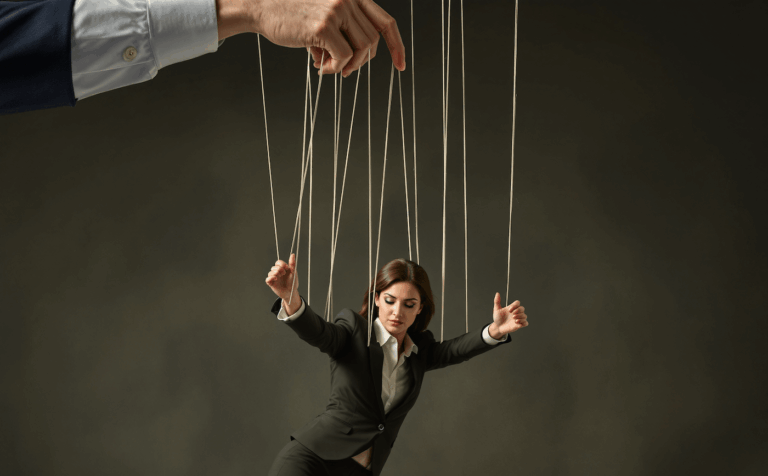Don’t Cut Your Way to Success: Why Smart Leaders Double Down on People During Crisis
When crisis hits, the playbook seems obvious: cut costs, slash budgets, and hunker down until the storm passes. Leadership development? Training programs? Employee engagement initiatives? They’re often the first to go in the name of “fiscal responsibility.”
But here’s what the data reveals: organizations that cut their way through crisis rarely emerge stronger. Meanwhile, the companies that thrive—the ones that capture market share and talent while others struggle—are doing something radically different. They’re doubling down on their people when conventional wisdom says to pull back.
The Uncertainty Crisis
Economic downturns and political instability create perfect storms for leaders. Market conditions shift rapidly, consumer behavior becomes unpredictable, and regulatory environments change overnight. Employee anxiety increases while customer expectations remain high. During these periods, your organization’s ability to adapt, innovate, and maintain morale becomes the ultimate competitive advantage.
Yet this is precisely when many companies treat their people as a cost center rather than their most valuable asset. The irony is stark: when you need your team’s best performance most, you’re potentially undermining their ability to deliver it.
The Psychology of Crisis Leadership
Uncertainty triggers fundamental human responses that can either paralyze or energize your organization. When leadership development is cut, several psychological impacts emerge: analysis paralysis as leaders hesitate to make decisions, reactive management that creates long-term problems, communication breakdown that breeds anxiety, and loss of psychological safety that stifles innovation precisely when creative solutions are needed most.
Why the “Cut First” Strategy Backfires
The conventional crisis response feels logical: reduce expenses, preserve cash, wait for better times. But this approach treats symptoms while ignoring the disease. Here’s why cutting leadership development during crisis is actually your most expensive mistake:
- Decreased Decision-Making Quality: Without ongoing development, managers struggle to navigate complex, rapidly changing situations. Poor decisions during critical periods can have lasting impacts that dwarf the cost of continued training.
- Erosion of Trust and Morale: Employees interpret cuts to development programs as signals that the organization doesn’t believe in their future. This damages engagement and loyalty precisely when you need both most.
- Skills Atrophy and Competitive Disadvantage: Leadership capabilities deteriorate without reinforcement, leaving your organization less capable when opportunities return. Meanwhile, forward-thinking competitors invest in their people, positioning themselves to capture market share during recovery.
The $2 Million Wake-Up Call
Here’s a reality check that will make your CFO’s head spin: The average cost of replacing a senior leader range from $300,000 to $2.3 million when you factor in recruitment, lost productivity, knowledge transfer, and the ripple effect on team performance. Yet most organizations would rather slash a $50,000 leadership development program than risk this massive hemorrhaging of talent and capital.
The math is brutal and undeniable:
- The Domino Disaster: When one key leader leaves, 67% of the time it triggers additional departures within six months. Your “cost-saving” decision just became a talent exodus that could cripple your organization for years.
- The Institutional Memory Massacre: Each departing leader takes an average of 7-10 years of accumulated knowledge, relationships, and problem-solving experience with them. This isn’t just losing an employee—it’s losing your competitive intelligence.
- The Recovery Penalty: While you’re scrambling to rebuild your leadership bench, competitors with intact teams are capturing your market share, your best clients, and your remaining talent. The window to recover may close before you even realize what you’ve lost.
Research shows that if leadership development prevents just one key employee departure (saving $75,000-$200,000 in turnover costs), a $15,000 annual investment pays for itself 5-13 times over.
The Smart Money Strategy: Double Down When Others Retreat
Organizations that maintain or increase leadership investment during uncertain times don’t just survive—they systematically destroy their competition. Research shows these companies are 2.5 times more likely to emerge stronger, but here’s what the research doesn’t capture: they’re also positioned to acquire distressed competitors, poach top talent at discounted rates, and capture market share that may never return to their weakened rivals.
- The Talent Acquisition Windfall: While competitors are laying off their best people, you’re hiring proven performers at 20-30% below pre-crisis market rates. Your leadership development programs make you the employer of choice for displaced top talent.
- The Innovation Explosion: Strong leadership teams don’t just maintain operations—they discover breakthrough solutions. Many of today’s industry-leading innovations were born during previous economic downturns by companies that invested in their people’s creative capabilities.
- The Market Share Seizure: Well-led organizations capture 30-50% more market share during recovery periods than those that played defense. This isn’t gradual growth—it’s permanent competitive repositioning.
- Revenue Protection: Companies maintaining leadership investment experience 10-15% less revenue decline during downturns and recover 40-60% faster when conditions improve.
Smart Investment Strategies That Don’t Break the Bank
Smart investment during uncertain times requires strategic focus, not massive budgets:
- Targeted Development: Focus on crisis-critical skills: decision-making under pressure, change management, crisis communication, emotional intelligence, and resilience building.
- Internal Programs: Pair senior leaders with emerging talent through mentoring programs. Establish peer learning circles where leaders share challenges and solutions. Use cross-training to increase organizational flexibility.
- Action Learning: Assign leaders to solve real business challenges as part of their development, creating immediate value while building capabilities.
- Technology Leverage: Use virtual platforms for cost-effective training that reaches distributed teams while maintaining engagement.
Building Authentic Leadership in Crisis
True leadership authenticity emerges during greatest challenges. Authentic leaders demonstrate transparent communication, values-based decision making, emotional regulation, adaptive thinking, and empathetic leadership. They use organizational values as guideposts when navigating ambiguous situations, creating consistency and predictability for their teams.
Measuring Return on Investment
Track retention rates, employee engagement scores, productivity measures, and decision-making speed. Organizations maintaining development programs see 20-30% better performance across these metrics. Well-led organizations typically experience 15-25% higher productivity during crisis periods and maintain better revenue per employee ratios.
The Leadership Imperative
Leading through uncertainty isn’t about having all the answers—it’s about building capabilities and relationships that enable your organization to find solutions together. When you invest in your people during challenging times, you’re making a statement about your values, confidence in the future, and commitment to authentic leadership.
The organizations thriving in our volatile world recognize their people as their primary competitive advantage. They understand that every dollar invested in leadership development during uncertain times returns exponentially when conditions improve.
The choice isn’t between cutting costs or going bankrupt—it’s between cutting your way to mediocrity or investing your way to market leadership. The smartest leaders understand that crisis creates the greatest opportunities for those bold enough to act while others hesitate.
Your Next Steps: Building Resilient Leadership
Here’s the uncomfortable truth: every day you delay investing in your leadership team, your competitors who understand this principle are gaining an insurmountable advantage. The window for action isn’t just closing—it’s slamming shut.
Don’t navigate this alone. The complexity of leading through uncertainty requires expertise, proven methodologies, and objective guidance. Consider engaging with Authentic Leader to accelerate your organization’s leadership development during these critical times.
Authentic Leader specializes in building resilient leadership capabilities that help organizations not just survive uncertainty but emerge stronger. Their proven approaches to authentic leadership development, crisis management, and organizational resilience can help you maximize your investment in people while minimizing current risks.
Contact Authentic Leader today to discuss how their battle-tested leadership development programs can help your organization build the authentic leadership capabilities needed to not just survive uncertainty, but to dominate your market during it. Your competitors are making their choice right now. What’s yours?
The question isn’t whether you can afford to invest in leadership development during crisis—it’s whether you can afford not to. Your future market position depends on the decision you make in the next 30 days.







